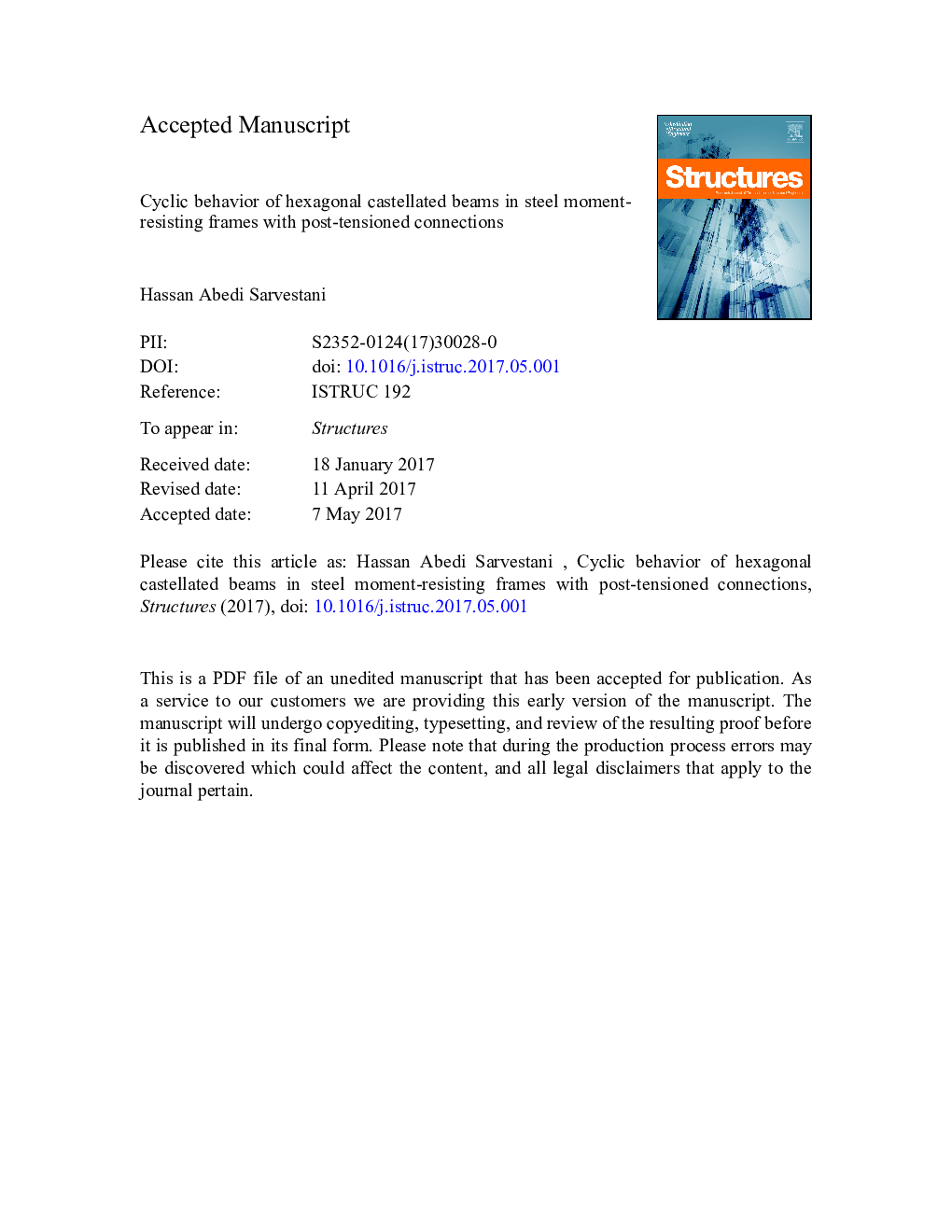| Article ID | Journal | Published Year | Pages | File Type |
|---|---|---|---|---|
| 4927901 | Structures | 2017 | 37 Pages |
Abstract
In this article, behavior of ten beam specimens, including five hexagonal castellated beams and five typical wide flange beams, in the post-tensioned semi-rigid beam-to-column steel connections of moment-resisting frames has been analyzed theoretically and numerically by well-known finite element software (ABAQUS 6.11-PR3) under the earthquake simulated by cyclic loading up to 4.4% lateral drift. Hexagonal castellated beams provide lower weight and higher bending strength in comparison with typical wide flange beams in post-tensioned semi-rigid steel connections. The inelastic deformations of the bolted top and bottom angles provide reliable level of energy dissipation, and the steel strands provide self-centering capability and revert the moment-resisting frame to its initial position without residual drift after a severe earthquake. The results of finite element analysis verified against experiment have proved that the theoretical method based on the previous researches accurately predicts the behavior of hexagonal castellated beams in the post-tensioned connections. All beam specimens did not suffer from the flange buckling and web shear buckling under the standard cyclic loading up to 4% lateral drift; likewise, hexagonal castellated beams in the post-tensioned connections showed adequate strength against web-post failure and vierendeel mechanism up until 4% drift. In order to investigate the ultimate failure modes of the specimens, they have also been subjected to an added half-cycle loading up to 4.4% lateral drift beyond the standard loading. The further drifts have leaded to the web-post buckling in most specimens with hexagonal castellated beams and flange buckling in all specimens with wide flange beams. In addition, the parametric study is suggested as a further investigation to comprehensively understand the behavior of hexagonal castellated beams in the PT connections and it is required to reach more general conclusions. This research has developed a benchmark to design hexagonal castellated beams in the PT semi-rigid connections, but a step-by-step design guideline is still required to add it to design codes and specifications for steel structures.
Related Topics
Physical Sciences and Engineering
Engineering
Civil and Structural Engineering
Authors
Hassan Abedi Sarvestani,
